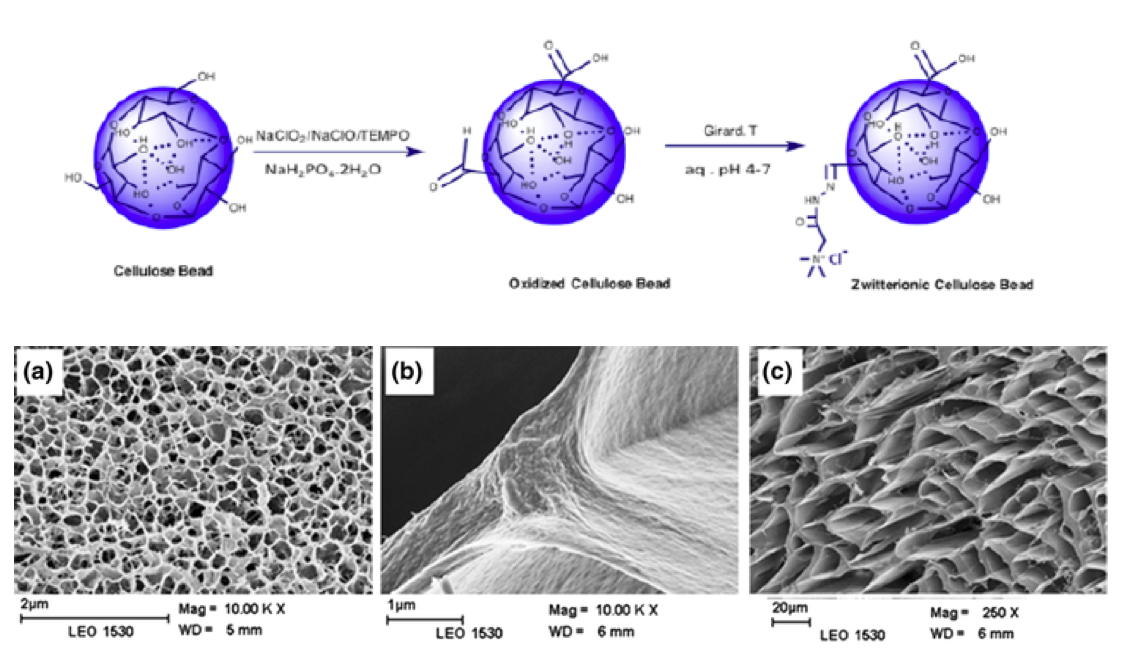The design and synthesis of polysaccharide-based materials utilizing a systematic approach is essential to develop sustainable and biodegradable value added products. In this work, new zwitterionic cellulose beads of desired size range were prepared via spin drop atomization followed by sol gel transition technique. Carboxylic acid (COOH) and carbonyl (C=O) moieties were generated using NaClO2/NaClO/TEMPO mediated oxidation system under heterogenous reaction conditions. Coupling reaction between carboxymethyl trimethylammonium chloride hydrazide (Girard’s reagent T) and carbonyl functionalities on cellulose resulted in the formation of stable hydrazone groups. A variation in molar ratio of NaClO2, NaClO and TEMPO were studied to understand the effect of each reagent on the generation of oxidized products. COOH and C=O content was determined by conductometric titrations and oximation with hydroxylamine hydrochloride followed by elemental analysis, respectively. Evidence of functionalization was obtained with ATR-FTIR, Raman, solid state 13C NMR spectroscopic studies and ToF–SIMS analysis. Morphological changes were studied by FE-SEM. The increased porosity and hydrophilicity of zwitterionic beads provides a platform for the future application of these beads in separation of biomolecules, chiral molecules, immobilization of proteins and enzymes and encapsulation of zwitterionic drugs.
Trivedi, P., Trygg, J., Saloranta, T. et al. Cellulose (2016) 23: 1751. https://doi.org/10.1007/s10570-016-0939-5

Very interesting information!Perfect just what I was searching for!Blog monetyze